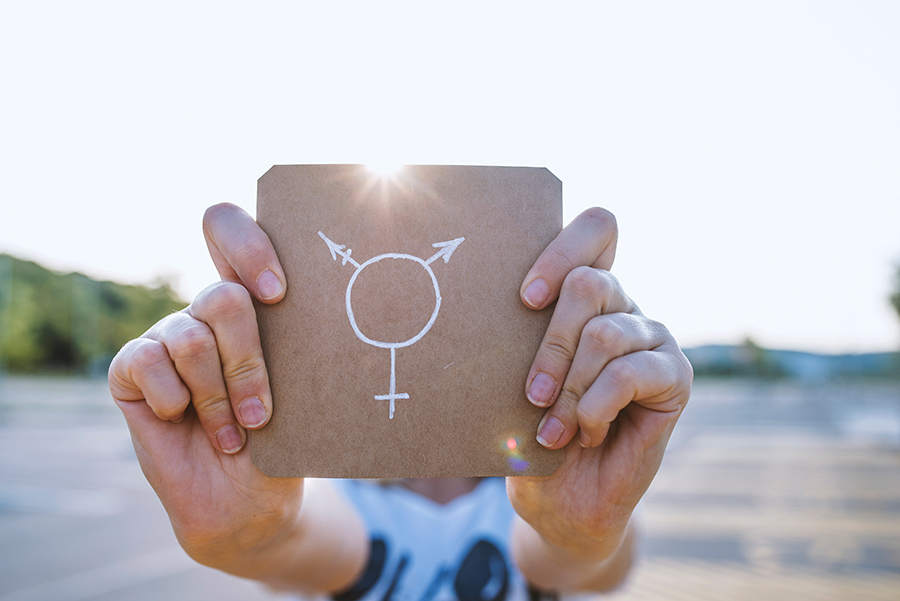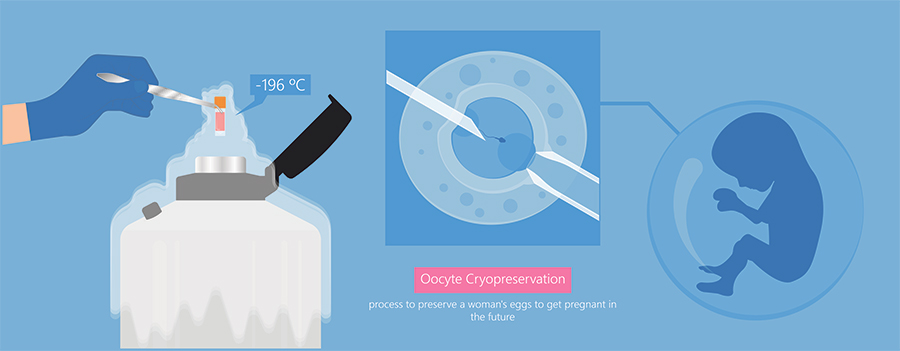Fertility preservation options in gender reassignment
Fertility preservation and transgender healthcare are rapidly growing areas of research and clinical practice. The World Professional Association for Transgender Health (WPATH) Standards of Care recommends in their seventh version that people seeking gender confirmation treatments are made aware of their fertility preservation options before undertaking any treatment. At the current time, though, there is limited knowledge on the options available and their feasibility for transgender people, and those supporting them.
Currently the established fertility services options for transgender men are oocyte cryopreservation and in case of a partnership embryo cryopreservation. For transgender women, sperm cryopreservation is the established protocol. There is theoretically also the possibility of cryopreserving gonadic tissue, but these entail experimental techniques for the future use of the tissue and are hence not the established fertility preservation method of choice.

Parental desires
Half of transgender men have been found to have parental desires but more recent and focused studies identified that 39% of assigned female at birth and 21.9% assigned male at birth respondents had parental desires. Whilst these contemporary figures are lower, they still indicate that a large proportion of transgender people desire to have children. Parental desires may be achieved through social or biological methods such as adoption of children prior to or post gender confirmation treatments, surrogacy (in some regions) or accessing fertility services for assisted reproduction techniques.
All options have a wide range of issues to consider. Barriers identified by transgender people for not seeking fulfilment of parental desires include concerns related to the adoption procedure and prejudices that may be experienced within it. They perceive that these prejudices will also cause any child they may have will be discriminated against and that they may as a transgender parent experience discrimination. Whilst transgender people may be fearful of discrimination, they are also concerned that to fulfil parental desire using their own genetic material may be extremely costly financially. Social methods of achieving parental desire such as adoption and surrogacy are not considered here but are options that need further discussion. The biological fertility treatment options are explored by Kelly Tilleman and her colleagues and described here.
Recent studies identified that 39% of assigned female at birth and 21.9% assigned male at birth respondents had parental desires.
Birth assigned male
For persons assigned male at birth (AMAB) the fertility preservation option of freezing sperm (sperm cryopreservation) has been available through fertility services since the 1950s, is effective and considered easy to perform. Despite this, it is important to note the potential psychological burden as it may not be easy for AMAB to collect a semen sample by masturbation. Sperm can also be collected and frozen prior to any gender confirmation treatment through surgical extraction but this is a surgical technique with its associated risks.

The remaining option is theoretical and experimental and involves the surgical collection of testicular tissue which is frozen with a view to unfreeze and mature later either in vitro or through transplantation followed by assisted reproduction techniques. The use of testicular tissue to obtain mature spermatozoa has never been used in humans.
Birth assigned females
As is the case for AMAB, the fertility preservation options for persons assigned female at birth (AFAB) are limited and each approach needs careful consideration prior to any interventions being undertaken. The three options are oocyte cryopreservation, embryo cryopreservation and the experimental ovarian tissue cryopreservation. Each are fraught with challenges.
Oocyte cryopreservation requires the AFAB ovaries to be stimulated and mature oocytes to be collected. This requires vaginal ultrasound monitoring during the period of ovarian stimulation, which is likely to be repugnant for women wishing to confirm their male gender.
Embryo cryopreservation involves the harvesting of mature oocytes which can be fertilized in vitro. An early decision related to the sperm sample used in the fertilization is acquired.
The third option is experimental requiring the collection of ovarian tissue which contain follicles with immature oocytes. The tissue is then frozen ready for the oocytes to be matured in vitro in the future. This technique may, in theory, not require a postponing of the gender confirming therapeutical journey. Indeed, it could in practice, be undertaken after commencement of testosterone hormone therapy and during gender confirmation surgery.

Collection of ovarian tissue (to gain immature oocytes)
This ex-vivo method is already used in women commencing cancer treatment, which may make them infertile. The use of ovarian tissue (to gain immature oocytes) for fertility preservation in women with cancer has been a successful technique but for AFAB it remains experimental, especially during testosterone therapy. Tilleman and colleagues have undertaken detailed studies to establish the feasibility of this form of fertility preservation.
The collection of ovarian tissue for collection of immature oocytes could, for AFAB, be undertaken during oophorectomy as part of gender confirmation surgery. This would reduce medical intervention during their gender confirming journey and remove the obstacles associated with mature oocyte collection to facilitate fertility preservation. This also removes the need to make parental decisions before the person has established their parental desires.
At present there remain a few time limited options for fertility preservation for transgender and gender diverse people.
Ovarian tissue after testosterone therapy
Ovarian tissue oocytes (OTO) are different in AFAB women after testosterone therapy to those undergoing oncology treatment. The ovarian cortex is stiffer in AFAB, despite this the follicles, from which immature oocytes emerge, are not destroyed. These immature oocytes are collected as cumulus-oocyte-complexes (COCs) from within the follicles of the ovarian tissue. After these COCs have been collected from transgender men usually at the time of oophorectomy and hysterectomy they were in vitro matured. These in vitro matured COCs were examined for spindle structure and chromosomal alignment which appeared normal before and after freezing; they have been shown to have normal meiotic spindles. Unfortunately, the ovarian tissue oocytes in vitro matured (OTO-IVM) during testosterone treatment, show low developmental capacity; they have very low fertility feasibility.

OTO-IVM
In their recent publication, Lierman et al. found the OTO after warming survival rate to be 72.6% but the fertilisation rate of these oocytes was only 34.5%. Half of these embryos reached day 3 with more than or equal to 6 cells. By day 5 only one blastocyst, an embryo consisting of three parts, inner cells, fluid filled cavity and outer cells, had developed. Abnormal cleavage (developmental) patterns were found in 45.8% of OTO-IVM and early embryo arrest was observed in 91.7%. Genetic analysis of the embryos showed a normal chromosomal patterns in 42% of the embryos analysed.
Conclusion
Despite fertility preservation and transgender healthcare research and clinical practice rapidly growing, at present there remain a few time limited options for fertility perseveration for transgender people. The WPATH recommend fertility preservation options that are effective are discussed with those exploring gender transition at an early stage. Given current knowledge if this is not undertaken at the beginning of the gender confirming journey, before or after cessation of the cross hormone treatment, transgender people may lose the opportunity for fertility by the time they identify parental desires.
For AMAB sperm cryopreservation is the only established fertility preservation technique. For AFAB given the current research knowledge available there are realistically only two options; oocyte cryopreservation or embryo cryopreservation.
Personal Response
What is next for your research?
<>We are in the process of drafting a research protocol for AFAB to harvest ovaries before testosterone treatment. At this time, the ovaries have not been exposed to testosterone yet. We can use these donations for optimisation of the OTO-IVM technique. If this would be found worthwhile, it could omit the burden of going through ovarian stimulation accompanied with endovaginal ultrasound monitoring, and result in mature and fertilisable oocytes.